Website + eCommerce: Configuration: Settings
Purpose
This document covers the Configuration Settings for the Website application in Odoo 15. We'll go over each sub-menu item and the items within. It also covers the installation and configuration of the eCommerce app.
Process
To get started, navigate to the Website app.

Once there, go to Configuration > Settings. Here we'll cover each section of this page.
Website
The first items in this section are action buttons.
Go to Website: This takes you to the front-facing website and is where you'll preview your site before publishing.
Pick a Theme: This takes you to a page of themes installed to your database.
To update a theme, click UPDATE THEME.
To remove the theme, click REMOVE THEME.
To install a new theme, hover over it and click Use this theme.
To preview a new theme, hover over it and select LIVE PREVIEW.
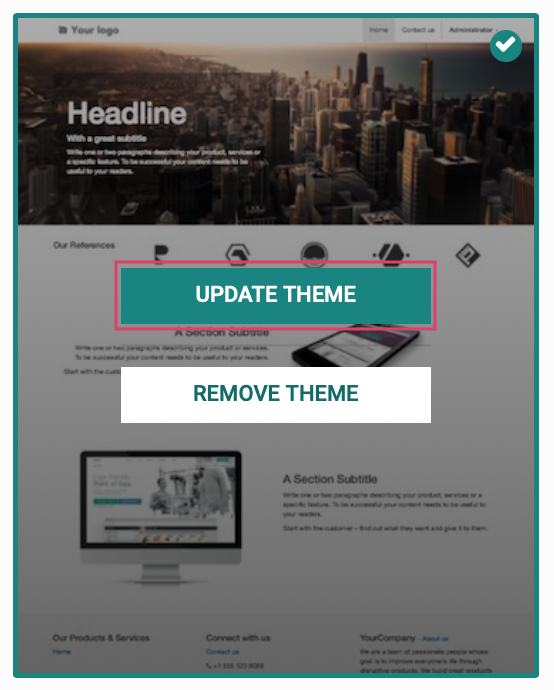
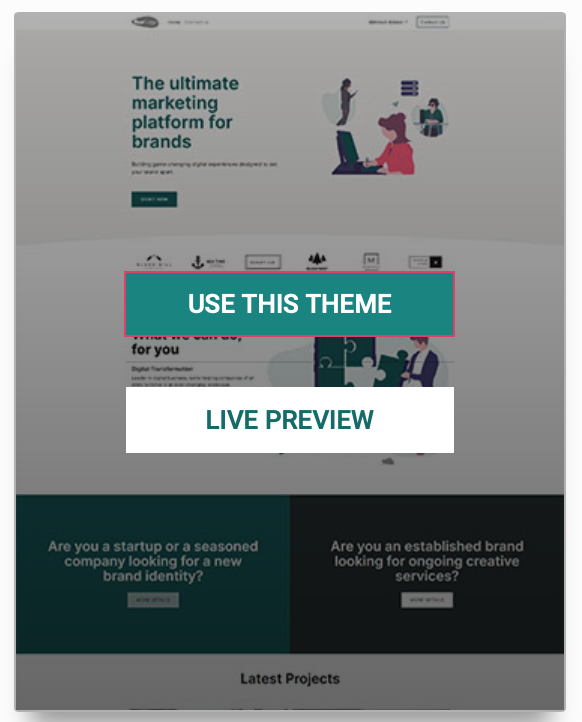
Website Title: Enter the title of your website. This is used throughout the Odoo website, so it should reflect your business name.
Favicon: This is the small graphic that will display on browser tabs.
Domain: Enter the domain name to use with your Odoo database. In the next field, you can filter by country group once the selection of available websites by domain is done.
Social Media: Activate this to display social media icons on your site. For each applicable platform, enter the absolute URL for your respective account (e.g. https://twitter.com/mybiz). Leave those that don't apply empty.
Languages: Select the languages to make available on your Odoo database.To add a new language, click Install new language.
Cookies Bar: Enable this to display a cookies bar on your website.
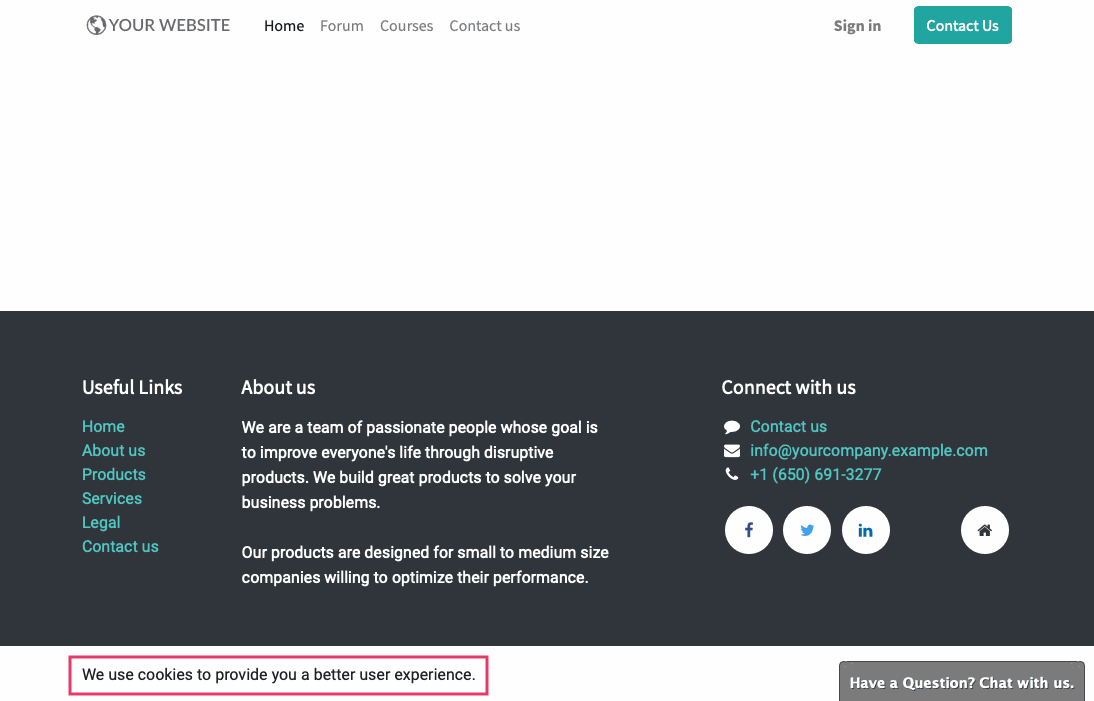
When you toggle this setting on, you'll see a warning message. From here you can select Do Not Activate or Activate Anyway.
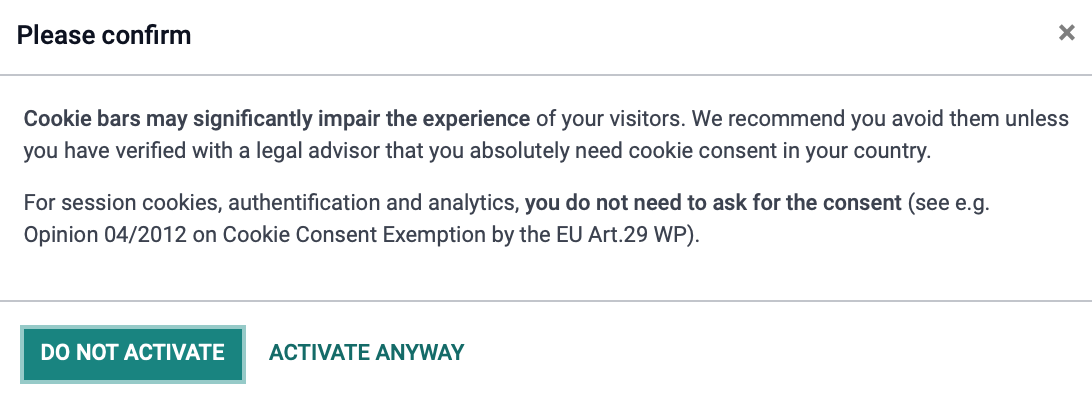
Default Social Share Image: Enable this to specify an image that will be used for social media when your website is shared. When this image is not set, your website logo will be used.
Content Delivery Network (CDN): If you use a CDN, enable this and enter values for the CDN Base URL and CDN Filters fields that will display.
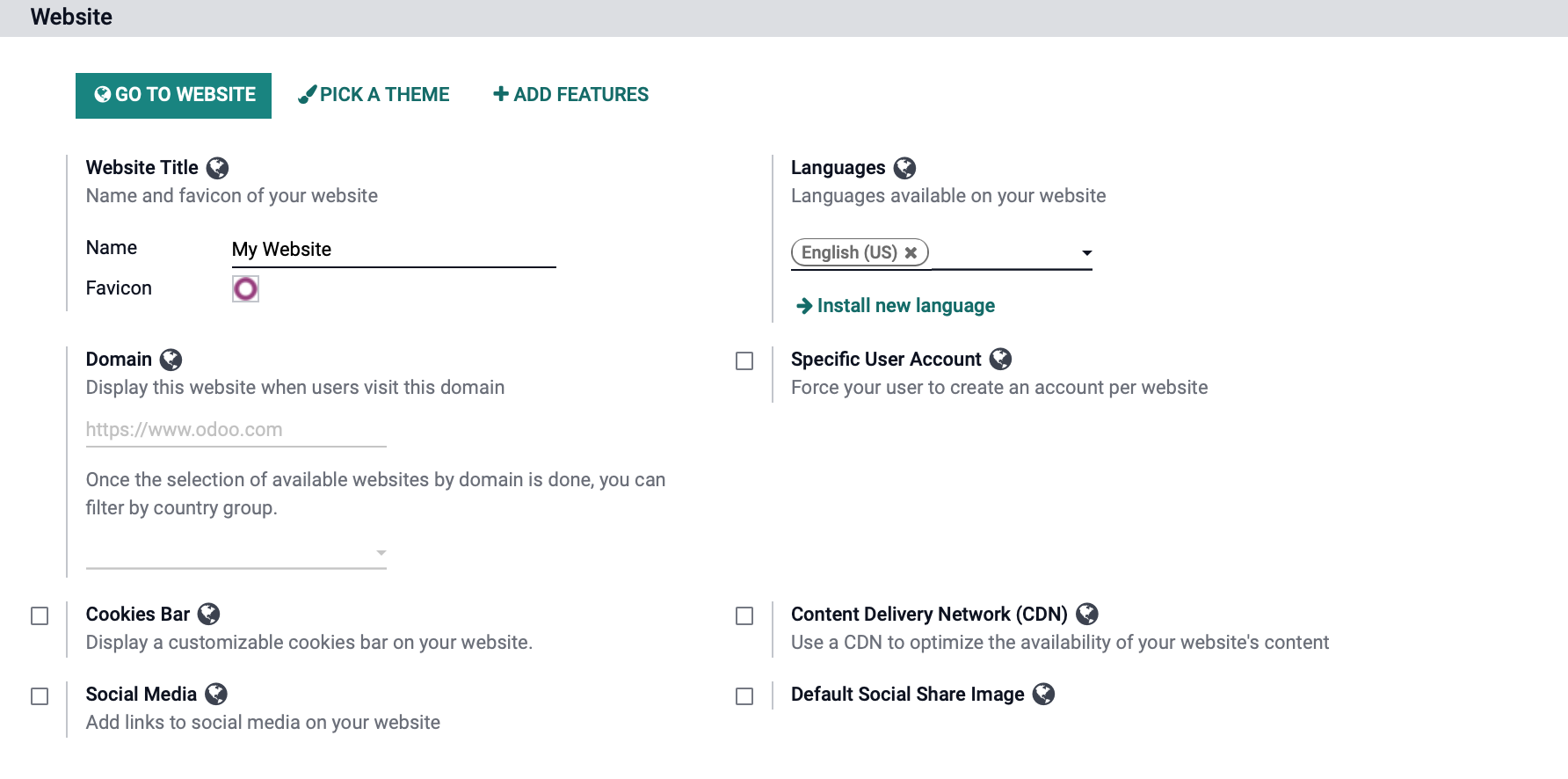
Important!
Some settings are not available unless you are in debug.
Content Delivery Network will only appear while in debug mode.
Features
Google Maps: This setting allows you to integrate Google Maps with your Odoo database. When enabled, you'll need to provide your API key from Google. If you don't have an API key, click CREATE A GOOGLE PROJECT AND GET A KEY and ENABLE BILLING ON YOUR GOOGLE PROJECT.
Customer Account: Select the method you'd like new customers to create an account.
On Invitation: When selected, only those who are invited can create an account.
Free Sign up: When selected, any website visitor can create an account.
DEFAULT ACCESS RIGHTS: Follow this link to set the default access rights for new customers.
Products
Variants: Sell variants of your products using attributes (size, color, etc.)
Attributes: Use this link to set up attributes for your different products.
Digital Content: Provide customer with product-specific links or downloadable content in the confirmation page of the checkout process if the payment gets through. To do so, attach some files to a product using the new Files button and publish them.
Stay on page after adding to cart: No redirect when the user adds a product to cart.
Inventory: Select your availability and visibility for items that are low or no longer in stock.
Out-of-Stock: Do you wish to continue selling this item if stock is currently depleted?
Show Availability: When stock is getting low, would you like a message to alert the customer at time of purchase?
Optional Products: When enabled, a modal window will display to the customer upon adding a specific product to the cart and ask if they'd also wish to add the configured optional products. This is a popular way to add things like extended warranties or product assembly. Optional products are configured on the SALES tab of a product.
Wishlists: Let returning customers save products in a wishlist via the icon.
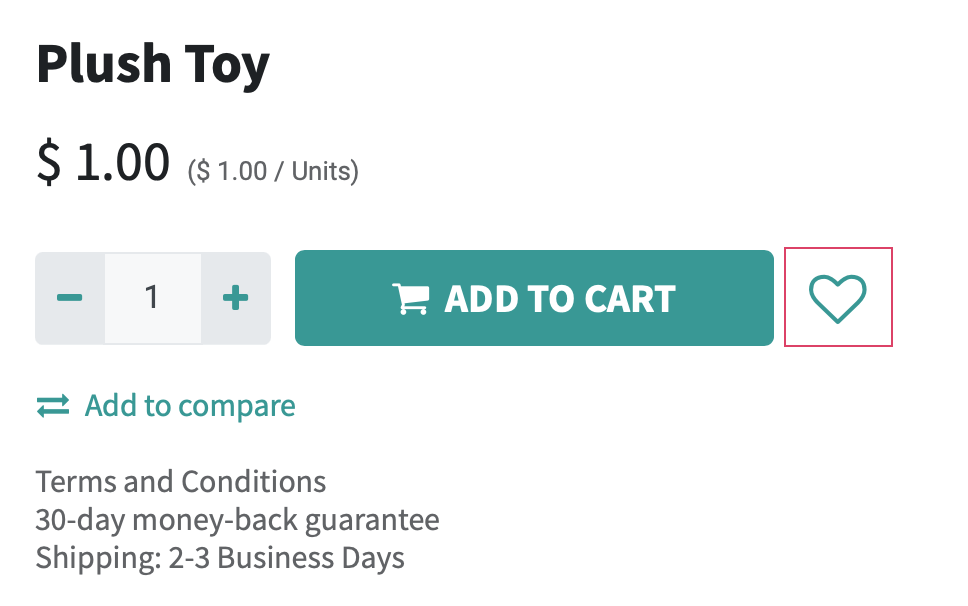
The wishlist will appear at the top of their webpage in the menu bar:

Product Comparison Tool: Allow customers to compare products based on their attributes using the Add to compare.
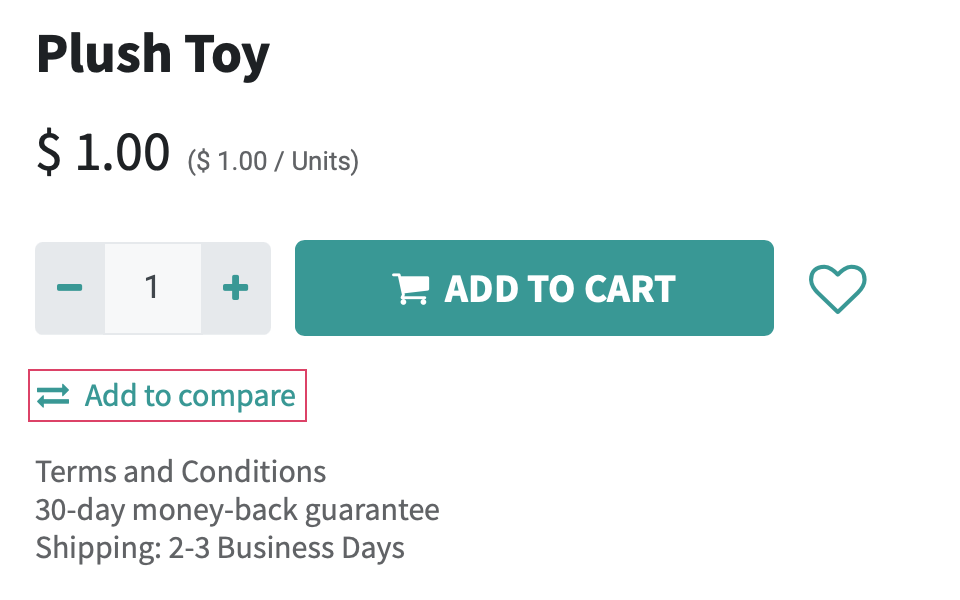
The compare list will appear as a tab at the bottom of their webpage:

Base Unit Price: Add price per base unit of measure on your products.
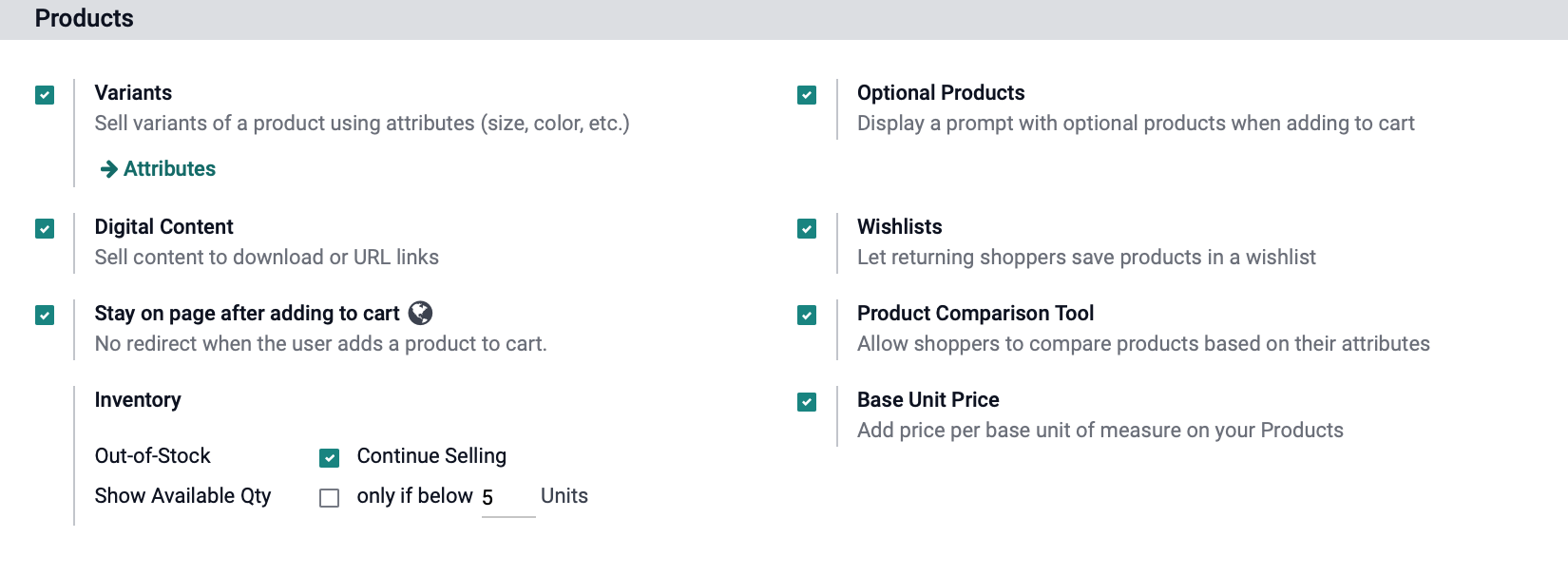
Pricing
Product Prices: Select how you would like your product pricing displayed for your web catalog.
Tax-Excluded: Tax is not included in the price.
Tax-Included: Products are displayed with tax incorporated.
Discounts: Apply manual discounts on sale order lines or display discounts computed from pricelists (option to activate in the pricelist configuration).
Gift Cards: Can be used as payment toward future orders.
Pricelists: Apply specific prices per country, discounts, etc.
Multiple prices per product: With this mode you can set several prices in the product configuration form (from Sales tab).
Advanced price rules: Set prices and computation rules from the Pricelists.
Coupons and Promotions: Boost your sales with these two kinds of discounts. Specific conditions can be set (products, customers, minimum purchase amount, period). Rewards can be discounts (% or amount) or free products.

Shipping
Shipping Address: When enabled, customers can enter a shipping address that differs from their billing address.
Shipping Costs: When enabled, customers can get shipping quotes from different Shipping Methods .
Connectors: Activate the shipping method you will be using to deliver your products.
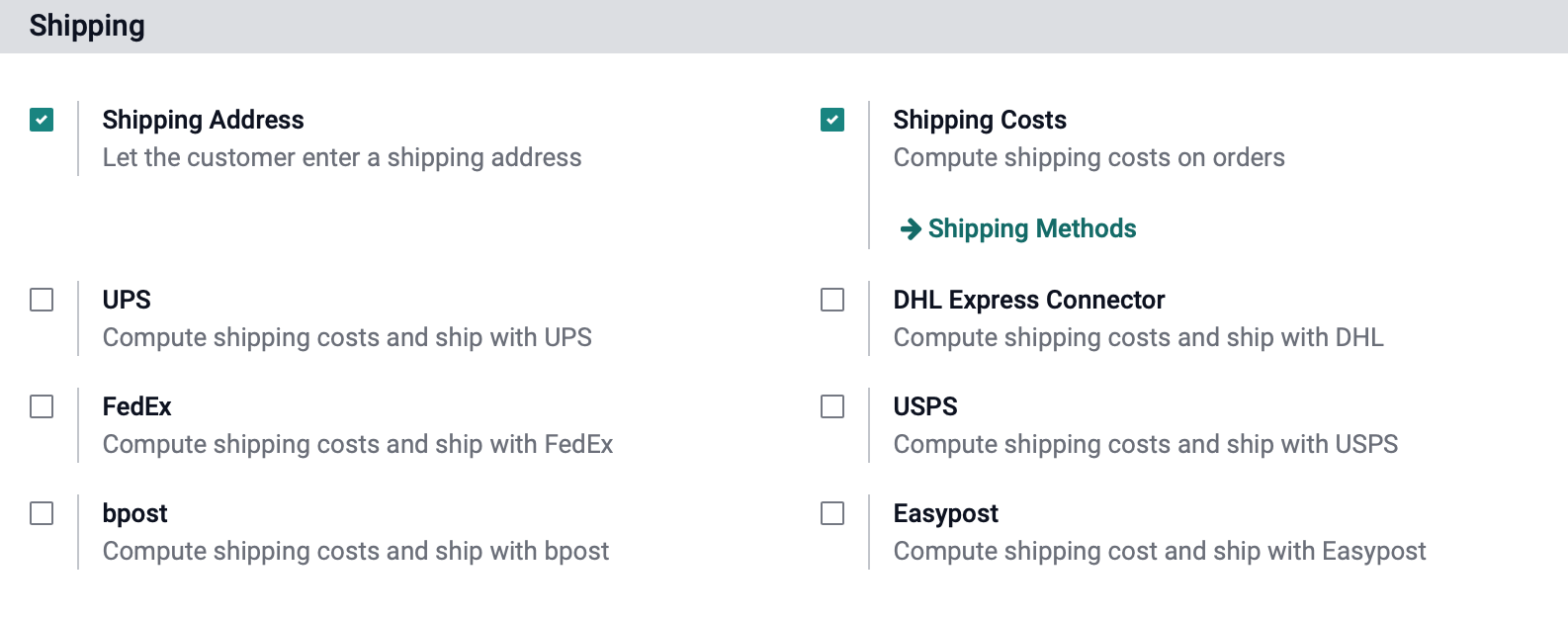
Invoicing
Invoicing Policy: Decide whether invoices are created from the ordered or delivered quantity of goods. If set to ordered quantities, the option to invoice will be available immediately after the order is confirmed. On Delivered, it will not be available until at least one item on the order has been delivered through a validated transfer.This is a global setting; disabling it here will disable it system-wide.
Automatic Invoice: Enabling this will generate invoices automatically when the online payment is confirmed. This is a global setting; disabling it here will disable it system-wide.

Orders Followup
Assignment: Select the Sales Team and/or Sales Person that online sales should be assigned to as the responsible user.
Abandoned Carts: Select the email template to be used when sending reminders to shoppers with abandoned carts. You can then indicate how many hours after the abandonment to wait to send this email. Use the icon to edit this email template.
Confirmation Email: Select the email template to be used when confirming an order. Use the icon to edit this email template.

Communication
Contact Form
Sales Team: Select the Sales Team that forms submitted via the Contact Us page will be assigned to.
Salesperson: Select the Salesperson that forms submitted via the Contact Us page will be assigned to.

SEO
Google Analytics: Enable to use Google Analytics to track your website performance. When enabled, you can then enter your Measurement ID. To obtain a measurement ID, follow the instructions on the How to get my measurement ID button.
Google Analytics Dashboard: When enabled, you can track your traffic directly in Odoo on the Website dashboard. To use this feature, you'll need to enter yoru Client ID and Client Secret from Google. Use the How to get my client ID button for further assistance.
Once enabled and configured, you can see your Analytic Data from Dashboard > Analytics.
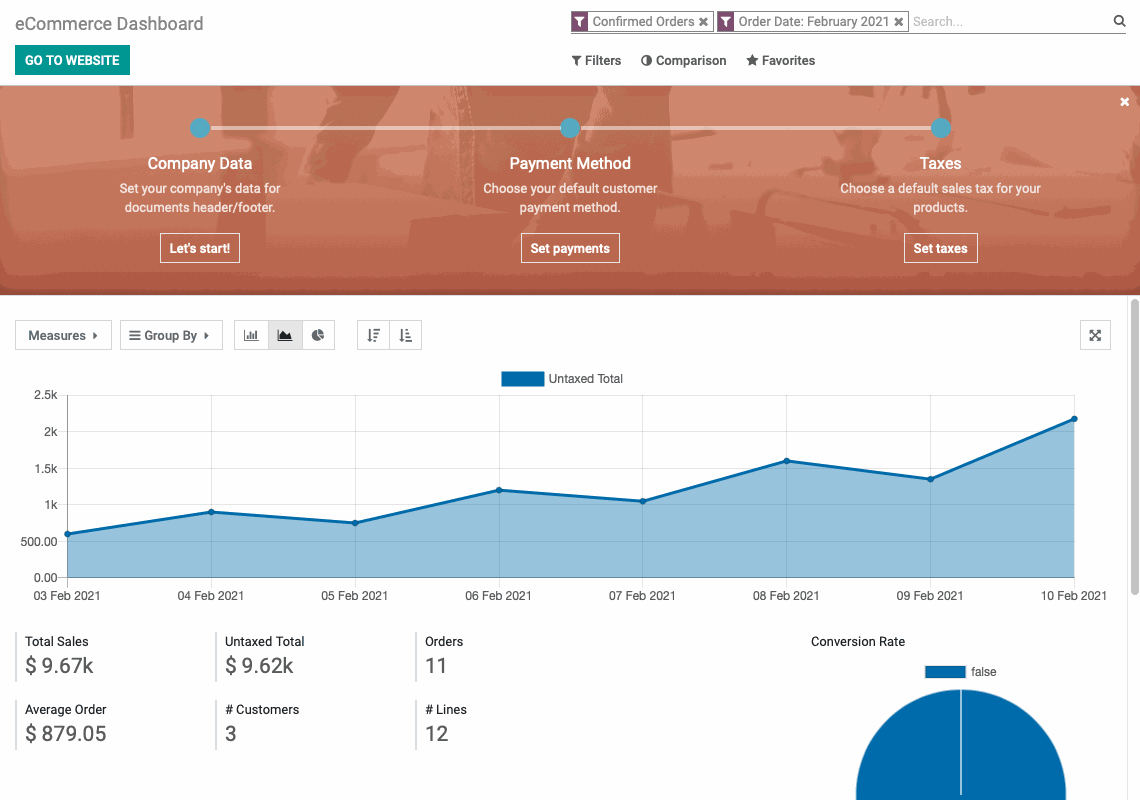
Sitemap: Click Submit sitemap to Google to submit your sitemap.xml to Google. You must have a domain configured to do this.
Console Google Search: Enable this to display Google search metrics within your Odoo database.
Robots.txt: This file tells to search engine crawlers which pages or files they can or can't request from your site. Click Edit Robots.txt to modify this file.
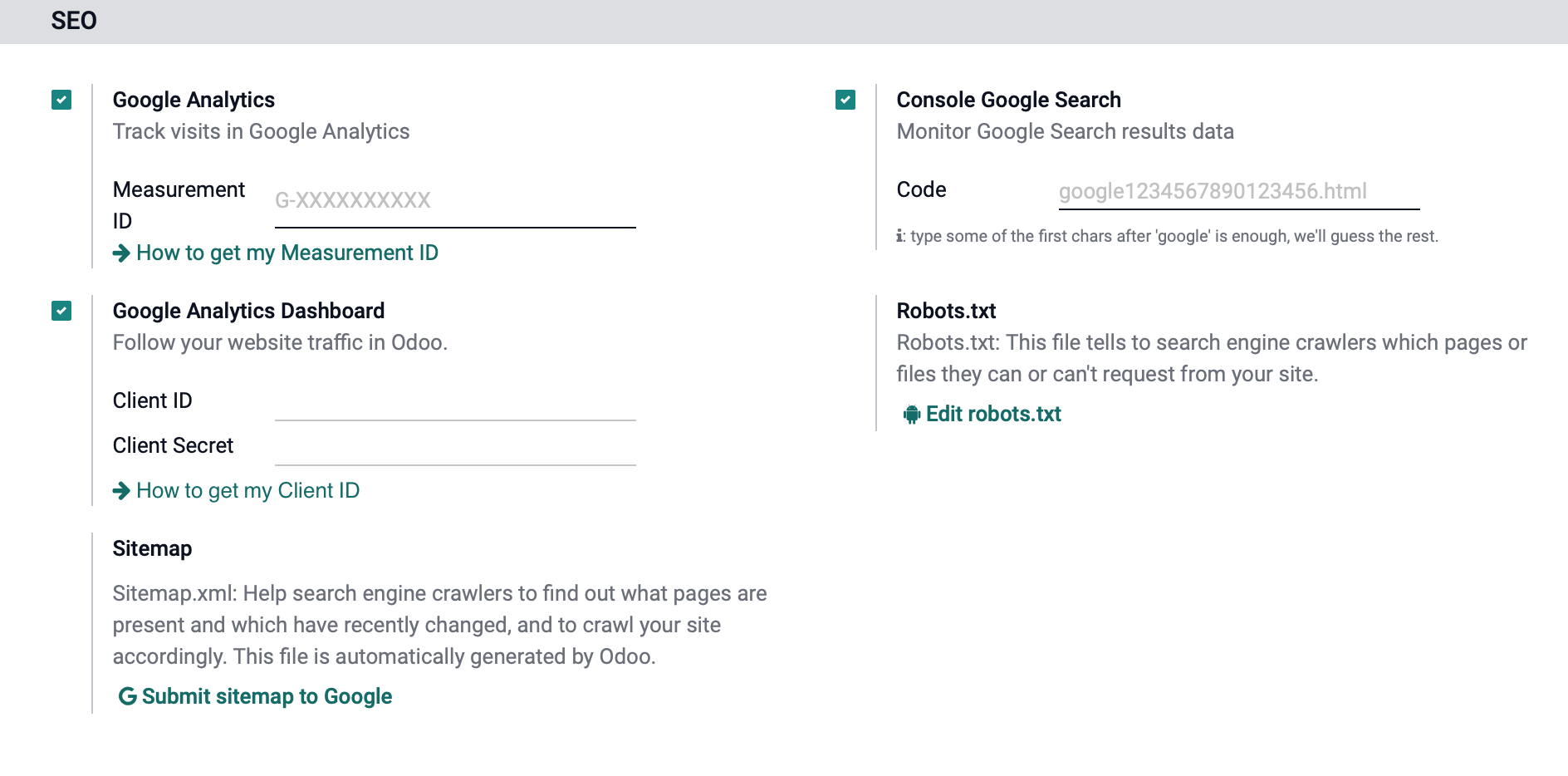
eCommerce Options
To install eCommerce, navigate to the Apps application.
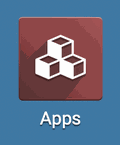
Once there, search for 'eCommerce' and click Install.

Once there, go to CONFIGURATION > SETTINGS. Here we'll cover the configuration settings added when installing eCommerce.
Select the Website to Configure
Website: Select the website you'll be configuring in the proceeding sections. You can also add another website instance by clicking CREATE A NEW WEBSITE.
